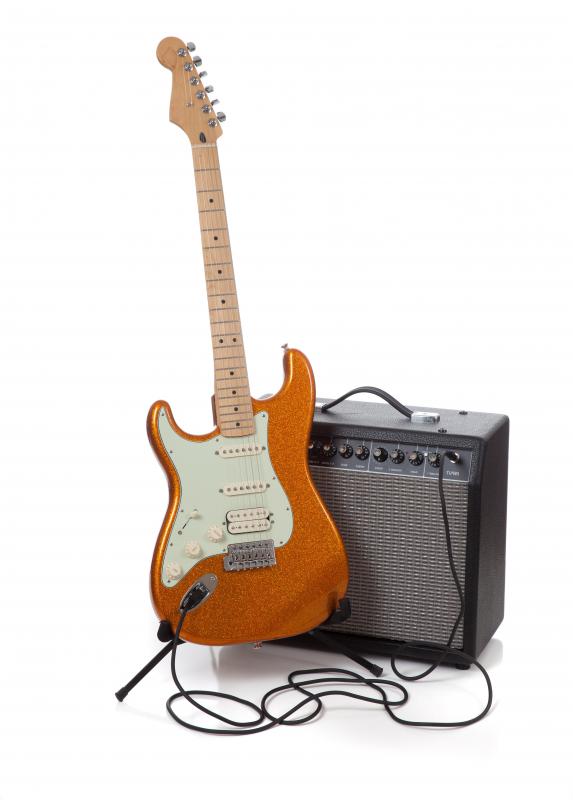At EasyTechJunkie, we're committed to delivering accurate, trustworthy information. Our expert-authored content is rigorously fact-checked and sourced from credible authorities. Discover how we uphold the highest standards in providing you with reliable knowledge.
What Is a Solid State Amplifier?
A solid state amplifier is one of the types of amplifiers that augment and intensify the sounds produced by musical instruments, radar equipment, and other communications equipment. While an amplifier can refer to any kind of signal amplifier, a solid state type of amplifier usually refers to the audio amplifier used for musical instruments like electric guitars or synthesizer keyboards. Unlike the vacuum tube amplifier that uses glass tubes to produce amplification, the solid state amplifier uses a circuit board to produce sounds. The name "solid state" refers to the semiconductor circuits. These solid state electronics do not burn out and require continual replacement as do the vacuum tube amplifiers, and are thus "solid" in their state.
An amplifier works by receiving a sound wave signal and transmitting the signal at a higher amplitude. In a solid state amplifier, the input signal passes through conductors on a circuit board. The signal is amplified, or augmented, and sent through the speakers. Early solid state amplifiers suffered from audio distortion due to higher voltage levels. The addition of the gain circuit helps the user to control the amount and type of distortion.

The inception of the transistor in 1947 revolutionized electronics and birthed the solid state industry. Before solid state technology, electronic devices used vacuum tubes to produce sounds in stereo amplifiers. While vacuum tubes produce a clearer, more mellow and sustained sound, the heavy glass tubes burn out or break over time. Solid state amplifiers are lighter and less expensive than their vacuum tube counterparts. Parts for a solid state amplifier are more readily available, affording music enthusiasts to create their own do-it-yourself amplifier with amplifier kits.

Compared to the vacuum tube speaker amplifier with its mellow overtones, the solid state audio quality is distinctly sharper and more piercing. Professional musicians tend to prefer the rich intonations of vacuum tube amplifiers but appreciate the functional and portable qualities of the solid state device. A preamp combines the audial beauty of the glass vacuum tubes with the size and versatility of solid state electronics.
Other advantages of the solid state amplifier include its ability to produce clear signals at a very wide bandwidth. Unlike the vacuum tube amplifiers that tend to fray at very high and very low frequencies, the solid state can produce clear audio signals at a wide bandwidth spectrum. Solid state amps also resist oblique sounds in the room. Vacuum tube amps are notorious for picking up other sound signals in the room and contaminating the audio transmission.
AS FEATURED ON:
AS FEATURED ON:












Discuss this Article
Post your comments